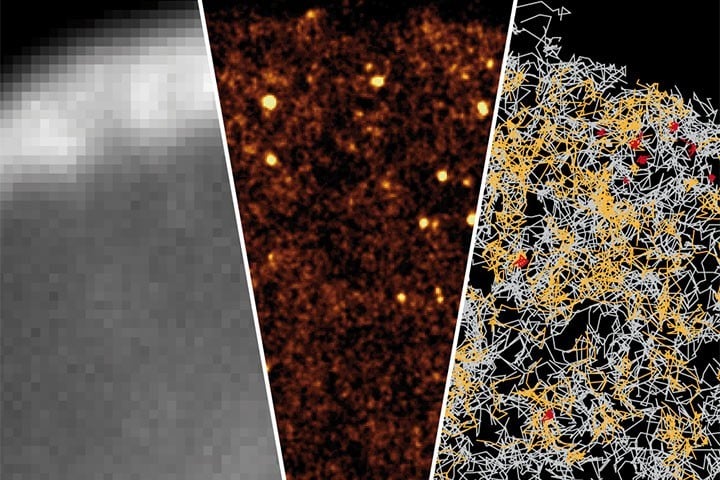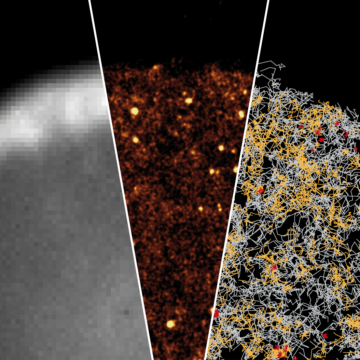
Amine Mehidi et al. dans Current Biology
>Transient Activations of Rac1 at the Lamellipodium Tip Trigger Membrane Protrusion ; Amine Mehidi, Olivier Rossier, Matthias Schaks, Anaël Chazeau, Fabien Biname, Amanda Remorino, Mathieu Coppey, Zeynep Karatas, Jean-Baptiste Sibarita, Klemens Rottner, Violaine Moreau, Grégory Giannone. Current Biology, Volume 29, ISSUE 17, P2852-2866.e5, September 09, 2019
DOI:10.1016/j.cub.2019.07.035
Commentaire
La motilité cellulaire est un processus intégré essentiel à de nombreux phénomènes physiologiques allant de l’embryogénèse à la réponse immunitaire. Le dérèglement de la motilité cellulaire est à l’origine de pathologies, notamment la formation de tumeurs et de métastases. Ainsi la compréhension des mécanismes régulant la migration cellulaire constitue un enjeu majeur dans le domaine de la biologie cellulaire. La motilité cellulaire repose sur la formation d’une structure constituée d’un réseau d’actines branché nommé lamellipode dont la formation nécessite l’intervention de protéines régulatrices de l’actine : Rac1 et les complexes Wave et Arp2/3. L’utilisation de suivi de protéine unique, nous a permis de comprendre comment la coordination spatio-temporelle de ces régulateurs contrôle la formation et la morphologie des lamellipodes de cellules migrantes. Nous avons ainsi découvert qu’à l’extrémité du lamellipode, l’activation transitoire de Rac1 stimule la protrusion membranaire, par l’activation du complexe Wave.
Abstract
The spatiotemporal coordination of actin regulators in the lamellipodium determines the dynamics and architecture of branched F-actin networks during cell migration. The WAVE regulatory complex (WRC), an effector of Rac1 during cell protrusion, is concentrated at the lamellipodium tip. Thus, activated Rac1 should operate at this location to activate WRC and trigger membrane protrusion. Yet correlation of Rho GTPase activation with cycles of membrane protrusion previously revealed complex spatiotemporal patterns of Rac1 and RhoA activation in the lamellipodium. Combining single protein tracking (SPT) and super-resolution imaging with loss- or gain-of-function mutants of Rho GTPases, we show that Rac1 immobilizations at the lamellipodium tip correlate with its activation, in contrast to RhoA. Using Rac1 effector loop mutants and wild-type versus mutant variants of WRC, we show that selective immobilizations of activated Rac1 at the lamellipodium tip depend on effector binding, including WRC. In contrast, wild-type Rac1 only displays slower diffusion at the lamellipodium tip, suggesting transient activations. Local optogenetic activation of Rac1, triggered by membrane recruitment of Tiam1, shows that Rac1 activation must occur close to the lamellipodium tip and not behind the lamellipodium to trigger efficient membrane protrusion. However, coupling tracking with optogenetic activation of Rac1 demonstrates that diffusive properties of wild-type Rac1 are unchanged despite enhanced lamellipodium protrusion. Taken together, our results support a model whereby transient activations of Rac1 occurring close to the lamellipodium tip trigger WRC binding. This short-lived activation ensures a local and rapid control of Rac1 actions on its effectors to trigger actin-based protrusion.
Mise à jour: 01/10/19


